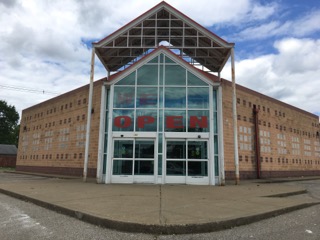Indiana House Democrats today unveiled a comprehensive road plan that would provide from $800-$900 million each year in new funding for state and local infrastructure each year without raising taxes or creating new tolls.
“Today, the people of Indiana find they have a choice in determining how we solve the crisis that is facing our state’s infrastructure,†said House Democratic Leader Scott Pelath from Michigan City. “House Republicans have advanced a proposal that increases the taxes you pay at the pump and at your local license branch, and raises the specter of new toll roads across our state. House Democrats believe we can do more — without raising new taxes or providing new tolls on roads — by ensuring that government lives within its means, and making sure that one class of taxpayers is not unfairly burdened with paying the freight for road repairs.â€
The Democratic proposal contains five components:
n  Dedicating each year’s state agency budget reversions toward state and local road funding. Based on past precedent, this would generate around $300 million per year. (Reversions over the past 10 years have averaged $496 million.)
n  Ensuring that all state sales taxes paid at the pump go toward state and local road funding. This would provide at least $305 million in FY 2018, $299 million in FY 2019, $331 million in FY 2020, and $361 million in FY 2021.
n  Ensuring that all revenue from the special fuels sales tax go to state and local roads. This would provide an additional $25 million in FY 2018, $27 million in FY 2019, $30 million in FY 2020, and $31 million in FY 2021.
n  Allowing the Next Generation Trust Fund to be used for local road loans, a move that would provide around $125 million each year in low interest loans to local communities.
n  Freezing the tax rates charged to corporations and financial institutions, and using the state funds that were to be used to finance future cuts toward state and local roads. This would provide an additional $27 million in FY 2018, $49 million in FY 2019, $77 million in FY 2020, and $105 million in FY 2021.
“Rather than shift the burden for infrastructure funding to the backs of people just trying to make ends meet, the Democratic plan uses existing resources,†said State Rep. Dan Forestal (D-Indianapolis), ranking Democrat on the House Roads and Transportation Committee. “I would invite everyone to compare our plan to that offered by the Republicans, which gives a huge tax cut to the connected 1 percent, and the largest tax hike in history to the rest of us. Our proposal also focuses on local roads, which make up 90 percent of such surfaces in our state. Our plan was crafted with hard-working Hoosiers in mind. Our Republican friends would be smart to listen to the voices of their constituents when they say they have been taxed enough.â€
State Rep. Gregory W. Porter (D-Indianapolis), ranking Democrat on the House Ways and Means Committee, added, “I would note that this proposal injects some honesty into the state budget process by making sure that the Next Generation Trust Fund is used for the purpose for which it was originally intended and applying reversion dollars to the tangible good of infrastructure improvements that can be enjoyed by all, instead of placing those dollars back into a state treasury for the sole purpose of continuing to inflate a surplus that already has been swollen to a bloated size. The House Republican proposal does little more than ask the people of Indiana to fork over their hard-earned dollars and trust those in charge to do the right thing, even when it comes to turning some of our roadways into toll roads.â€
The legislators noted that the bill also includes a provision that would prohibit “pay to play†campaign contributions from a public works contractor and other interested parties during the length of any roads contract and three years after its completion. The proposal is virtually the only campaign finance reform initiative that has been discussed this session.
Other provisions of the proposal call for placing a priority on hiring Hoosier workers for projects built with these road funds, prioritizing maintenance on existing roads first, the use of prevailing wage rates on the projects, and a renewed emphasis on projects being done by businesses owned by women, minorities, and veterans.
House Democrats expect to offer their proposal as an amendment to the House Republican roads plan contained in House Bill 1002 when it goes before the Ways and Means Committee later this week. They also said the plan would be offered when the measure reaches the full House for consideration later this session.



